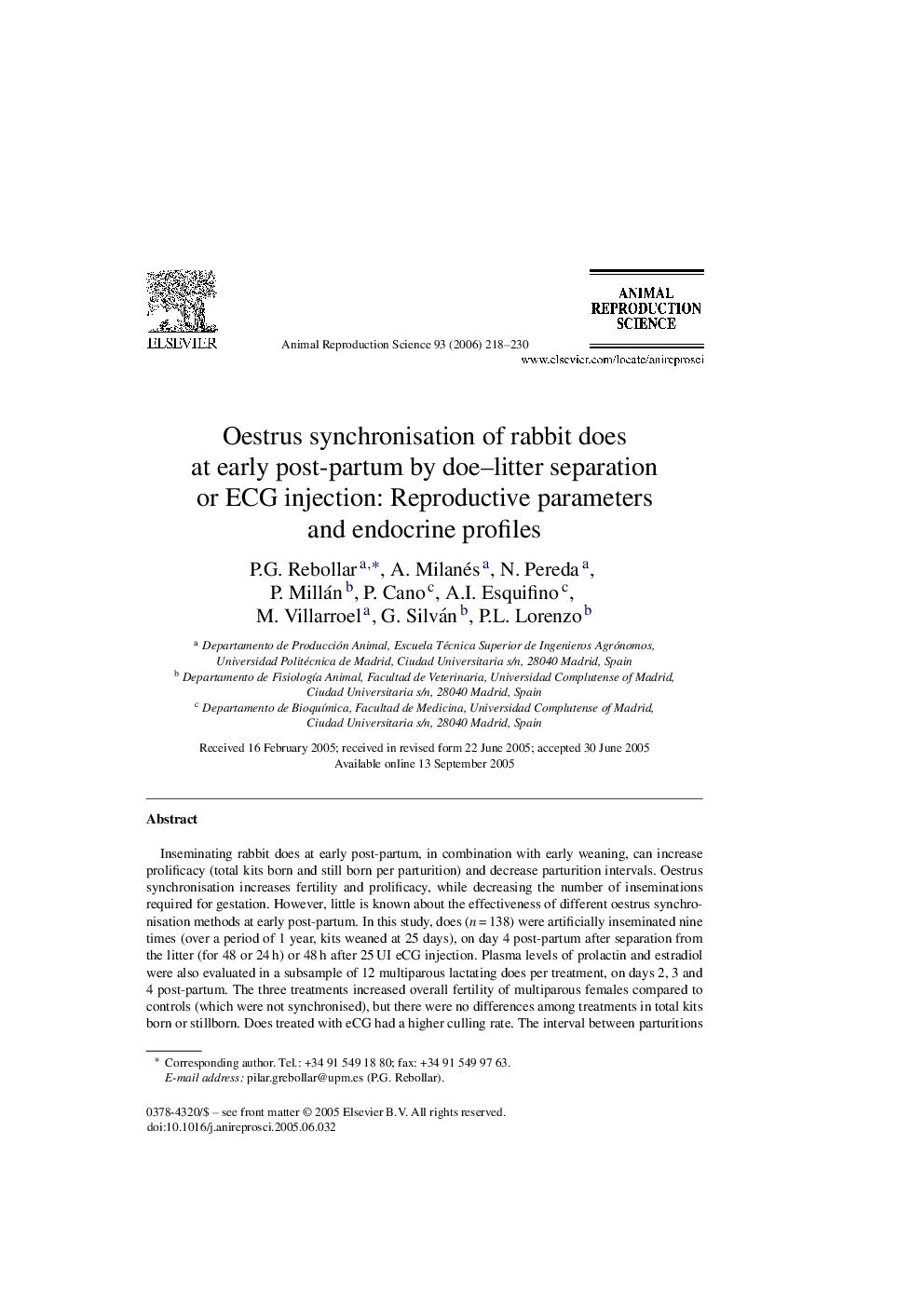| کد مقاله | کد نشریه | سال انتشار | مقاله انگلیسی | نسخه تمام متن |
|---|---|---|---|---|
| 2075092 | 1544828 | 2006 | 13 صفحه PDF | دانلود رایگان |

Inseminating rabbit does at early post-partum, in combination with early weaning, can increase prolificacy (total kits born and still born per parturition) and decrease parturition intervals. Oestrus synchronisation increases fertility and prolificacy, while decreasing the number of inseminations required for gestation. However, little is known about the effectiveness of different oestrus synchronisation methods at early post-partum. In this study, does (n = 138) were artificially inseminated nine times (over a period of 1 year, kits weaned at 25 days), on day 4 post-partum after separation from the litter (for 48 or 24 h) or 48 h after 25 UI eCG injection. Plasma levels of prolactin and estradiol were also evaluated in a subsample of 12 multiparous lactating does per treatment, on days 2, 3 and 4 post-partum. The three treatments increased overall fertility of multiparous females compared to controls (which were not synchronised), but there were no differences among treatments in total kits born or stillborn. Does treated with eCG had a higher culling rate. The interval between parturitions and the number of inseminations required for gestation tended to decrease with increasing number of inseminations. In lactating does, there was an interaction between treatment and insemination order. Fertility decreased with increasing inseminations in eCG does but tended to increase above control values in the separated does until the fourth insemination. Control lactating does had significantly less kits per parturition compared to treatments, but eCG lactating does had more stillborn kits. Oestradiol levels increased on day 4 post-partum in all synchronised lactating does (and immediately before artificial insemination in 48 h doe–litter separation), so ovarian activity could be stimulated at early post-partum using all treatments. However, the increase could not be explained by prolactin levels, since there were no effects of suckling absence on plasma prolactin in separated does. In conclusion, separating does from the litter before insemination can be just as effective as eCG treatment, especially during for the first four inseminations.
Journal: Animal Reproduction Science - Volume 93, Issues 3–4, July 2006, Pages 218–230